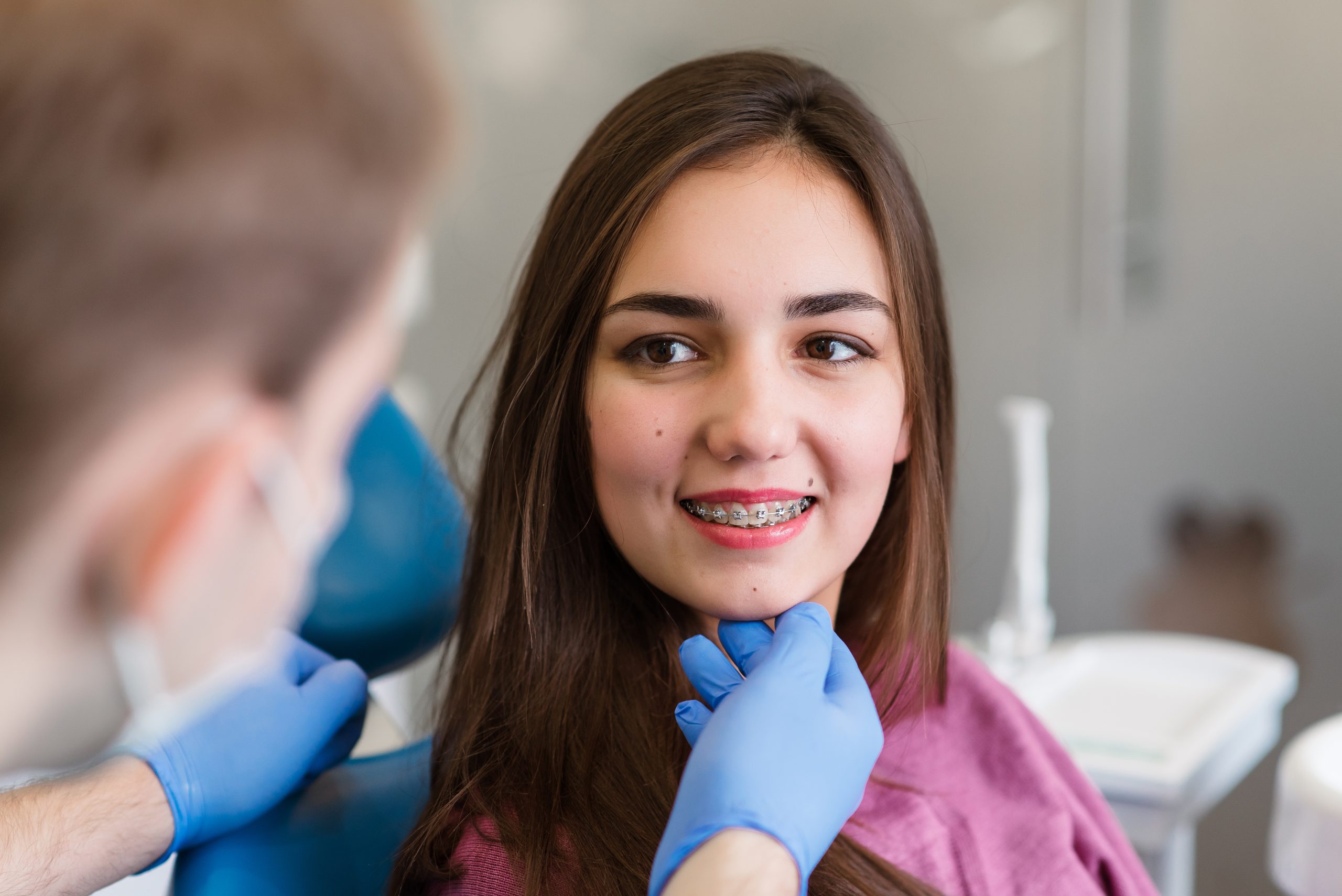- Orthodontic treatment time can vary considerably depending on the nature of the malocclusion and the individual diagnosis and treatment plan.
- In general, early interceptive treatment for 7 to 9 year olds will take approximately 8 to 12 months. Typical full braces or Invisalign for adolescents might take from 12 to 24 months with additional time required if there is an impacted tooth.
- Typical full braces or Invisalign for adults might take from 12 to 24 months depending on the nature of the malocclusion. Please note that these times are approximate only and could be shorter in cases of very minor treatment and could be longer when other complicating factors are present.
- When braces are first placed on the teeth there is a light force pushing on the teeth that can make the teeth ache after a few hours. This discomfort usually only lasts two or three days and then things settle down. It is advisable to eat soft foods for these first few days until the discomfort has settled down.
- It is also a good idea to use a non-prescription pain reliever for these first few days such as Advil that you might normally use for a headache. Similar discomfort will likely occur following each adjustment when the archwire is changed or reshaped, so the same advice is recommended following adjustments. It should be noted that similar discomfort occurs with Invisalign (clear aligner) treatment as well and the same advice holds for this type of treatment.
- Braces can also cause some abrasion to the inside surfaces of the lips and cheeks, which can cause some discomfort. An archwire can shift or turn and cause a wire poke into the lips or cheeks when can cause discomfort. The use of protective wax on the braces in sensitive areas or at pokey wires can be very helpful. Please check the section of this website about emergencies for more information.
- Accelerated orthodontic treatment techniques including vibration and laser pulse techniques have been reported to reduce the discomfort of orthodontic pressure on teeth. Ask your orthodontist if these techniques might be advisable for your treatment.
- Do-it-yourself orthodontics is something you might come across when surfing the internet.
- A few enterprising people have found a way to partially mimic clear aligner treatment without the help of a dentist or orthodontist.
- Please think carefully before embarking on such a project. Without full diagnostic records including radiographs, photographs, models of the teeth and a full clinical examination as provided by a dentist or orthodontist, a proper diagnosis cannot be made and a safe and appropriate treatment plan cannot be set.
- You could cause yourself harm in the process of attempting do-it-yourself orthodontics.

Orthodontic treatment time can vary considerably depending on the nature of the malocclusion and the individual diagnosis and treatment plan.
In general, early interceptive treatment for 7 to 9 year olds will take approximately 8 to 12 months. Typical full braces or Invisalign for adolescents might take from 12 to 24 months with additional time required if there is an impacted tooth.
Typical full braces or Invisalign for adults might take from 12 to 24 months depending on the nature of the malocclusion. Please note that these times are approximate only and could be shorter in cases of very minor treatment and could be longer when other complicating factors are present.
When braces are first placed on the teeth there is a light force pushing on the teeth that can make the teeth ache after a few hours. This discomfort usually only lasts two or three days and then things settle down. It is advisable to eat soft foods for these first few days until the discomfort has settled down..
It is also a good idea to use a non-prescription pain reliever for these first few days such as Advil that you might normally use for a headache. Similar discomfort will likely occur following each adjustment when the archwire is changed or reshaped, so the same advice is recommended following adjustments. It should be noted that similar discomfort occurs with Invisalign (clear aligner) treatment as well and the same advice holds for this type of treatment.
Braces can also cause some abrasion to the inside surfaces of the lips and cheeks, which can cause some discomfort. An archwire can shift or turn and cause a wire poke into the lips or cheeks when can cause discomfort. The use of protective wax on the braces in sensitive areas or at pokey wires can be very helpful. Please check the section of this website about emergencies for more information.
Accelerated orthodontic treatment techniques including vibration and laser pulse techniques have been reported to reduce the discomfort of orthodontic pressure on teeth. Ask your orthodontist if these techniques might be advisable for your treatment.
Do-it-yourself orthodontics is something you might come across when surfing the internet.
A few enterprising people have found a way to partially mimic clear aligner treatment without the help of a dentist or orthodontist.
Please think carefully before embarking on such a project. Without full diagnostic records including radiographs, photographs, models of the teeth and a full clinical examination as provided by a dentist or orthodontist, a proper diagnosis cannot be made and a safe and appropriate treatment plan cannot be set
You could cause yourself harm in the process of attempting do-it-yourself orthodontics.
